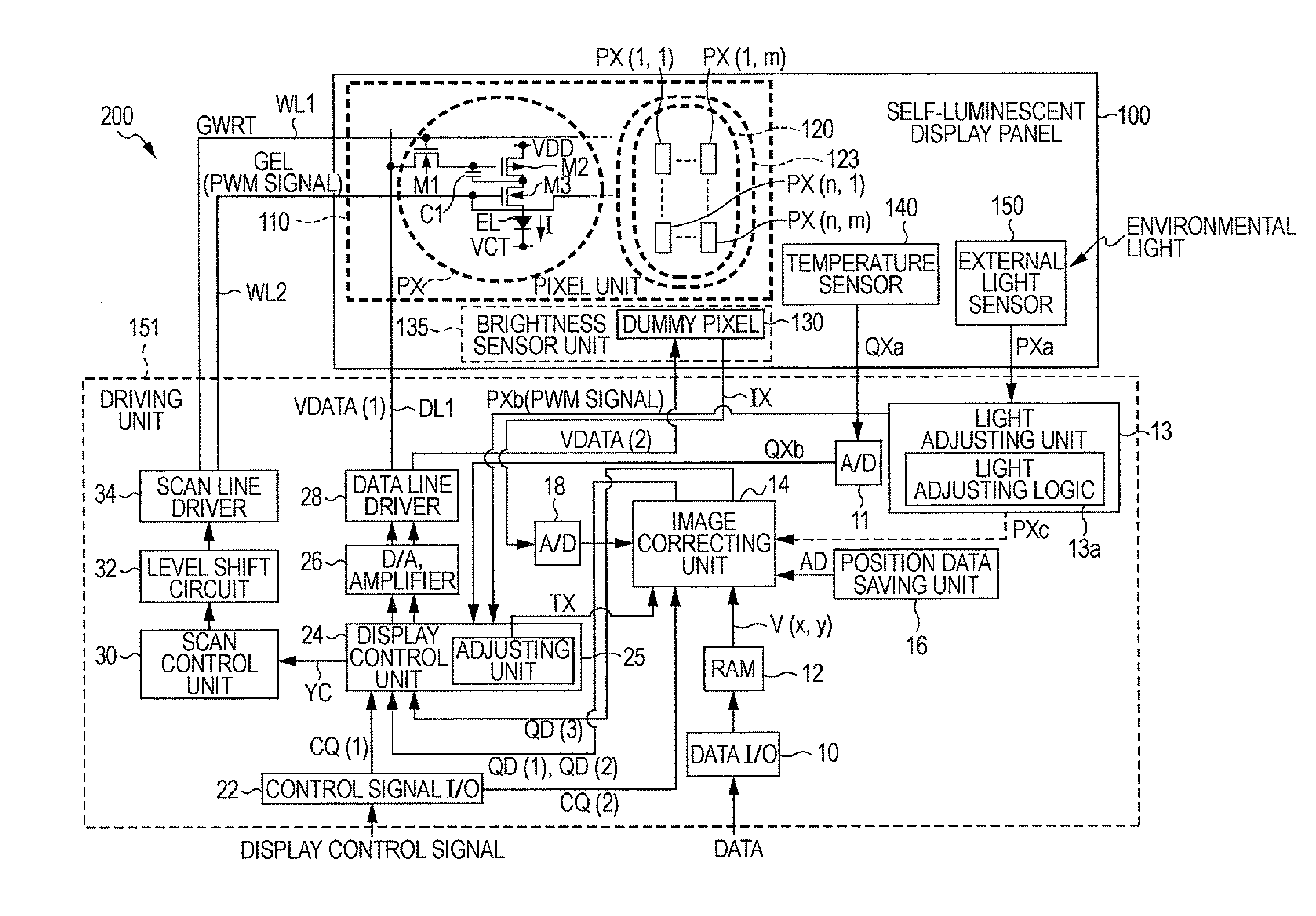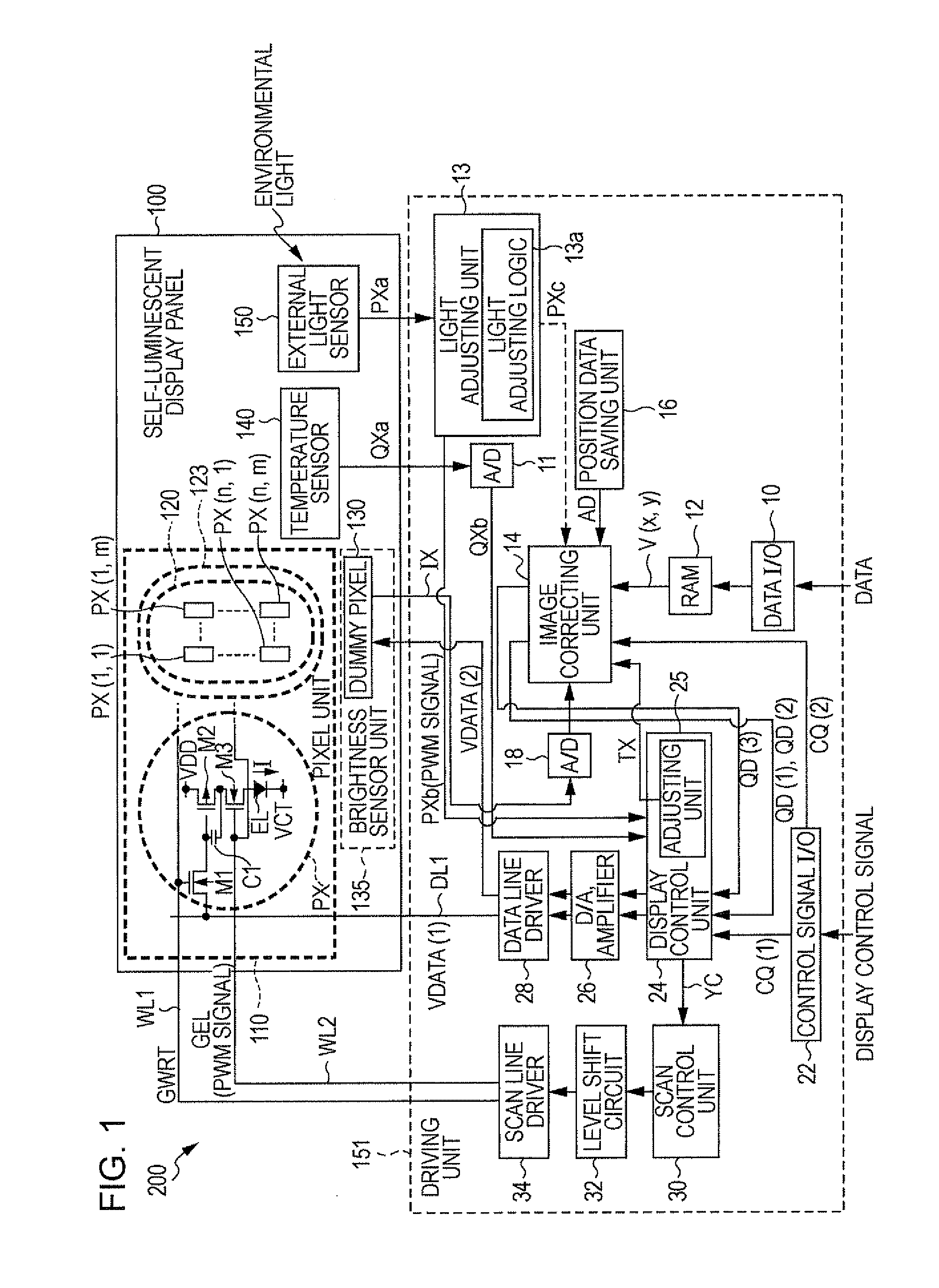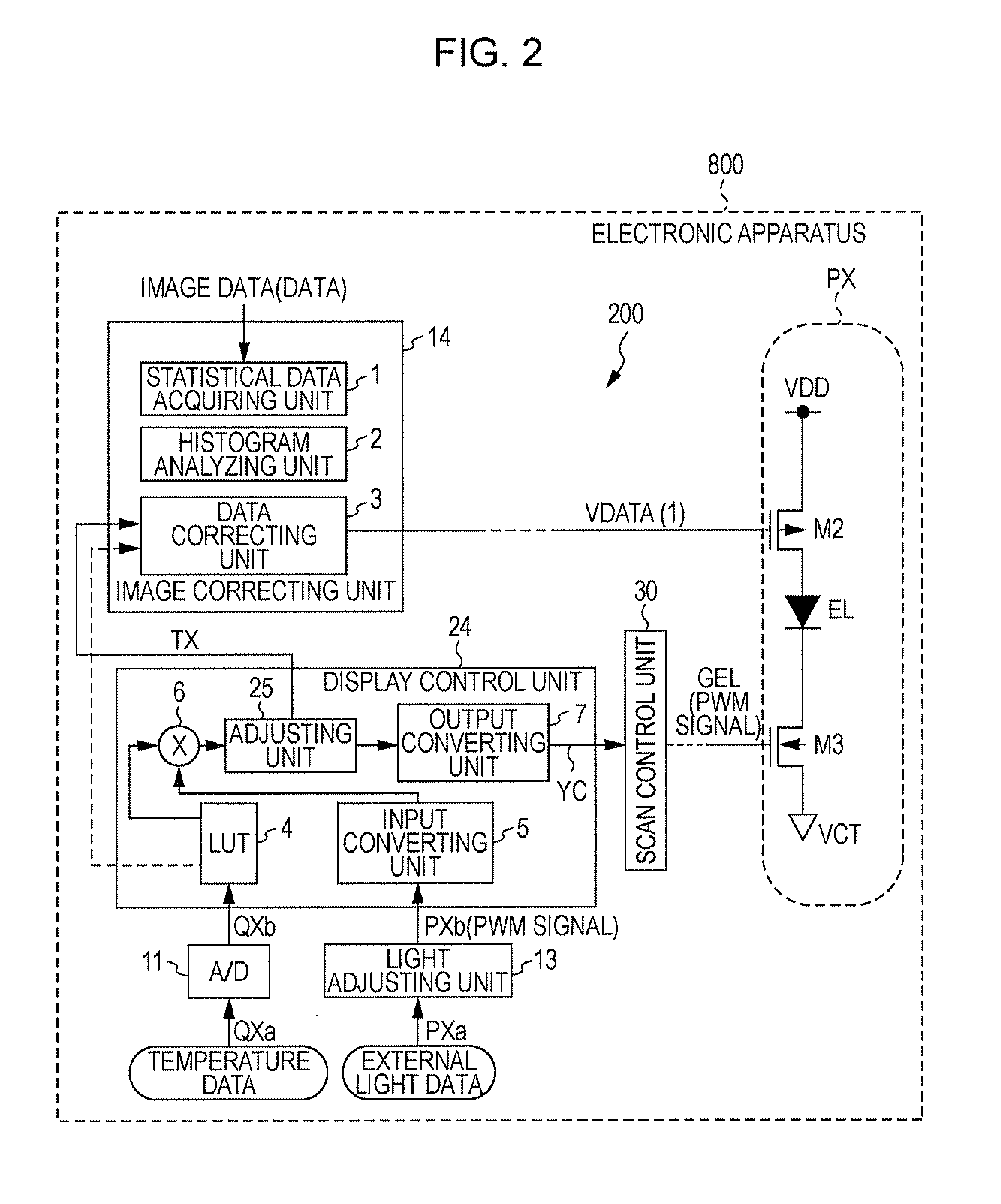Self-luminescent display device having a temperature and light sensor for correcting image data and electronic apparatus thereof
a self-luminescent display and temperature sensor technology, applied in the direction of electroluminescent light sources, static indicating devices, instruments, etc., can solve the problems of increasing power consumption, accelerating degradation of pixels, and difficulty in most suitably correcting images, etc., to achieve constant image display, small size, and high quality
- Summary
- Abstract
- Description
- Claims
- Application Information
AI Technical Summary
Benefits of technology
Problems solved by technology
Method used
Image
Examples
first embodiment
[0048]FIG. 1 shows an example of a configuration of a self-luminescent display device of the invention. A self-luminescent display device 200 has a self-luminescent display panel 100 using organic EL elements and a driving unit 151 of the self-luminescent display panel.
Configuration of Self-Luminescent Display Panel
[0049]The self-luminescent display panel 100 has a pixel unit 110 in which a plurality of pixels PX are arranged in a matrix and a brightness sensor unit 135 including a dummy pixel 130.
[0050]Each of the pixels PX is provided to a crossing of each of a plurality of scan lines (to put it specifically, a first scan line WL1) and each of a plurality of data lines (DL1). The pixel PX includes a writing transistor M1, a driving transistor M2, a light emitting control transistor M3, a holding capacitor C1 and an organic EL element EL. The driving transistor M2 has a source connected to a pixel power supply voltage VDD of a high level. The organic EL element EL has a cathode con...
second embodiment
[0079]According to the embodiment, the self-luminescent device controls a compensation for secular degradation on the basis of the detection signal IX of the brightness sensor unit 135 in addition to the three kinds of light emitting brightness correction (image correction based on statistical data of input image data, brightness correction based on external light and temperature) described above. That is, focus on a portion in which secular degradation is expected to be severe and intensively correct brightness in an area close to an interface between that portion and the surroundings, so that size of pixels to be corrected can be made small and the load of the correcting circuit can be reduced. Brightness unevenness can be efficiently and effectively prevented from occurring, e.g., in an area in which a same image is displayed for a long time and in the surrounding area by means of the compensation for secular degradation. According to the embodiment, four kinds of light emitting ...
PUM
 Login to View More
Login to View More Abstract
Description
Claims
Application Information
 Login to View More
Login to View More - R&D
- Intellectual Property
- Life Sciences
- Materials
- Tech Scout
- Unparalleled Data Quality
- Higher Quality Content
- 60% Fewer Hallucinations
Browse by: Latest US Patents, China's latest patents, Technical Efficacy Thesaurus, Application Domain, Technology Topic, Popular Technical Reports.
© 2025 PatSnap. All rights reserved.Legal|Privacy policy|Modern Slavery Act Transparency Statement|Sitemap|About US| Contact US: help@patsnap.com



